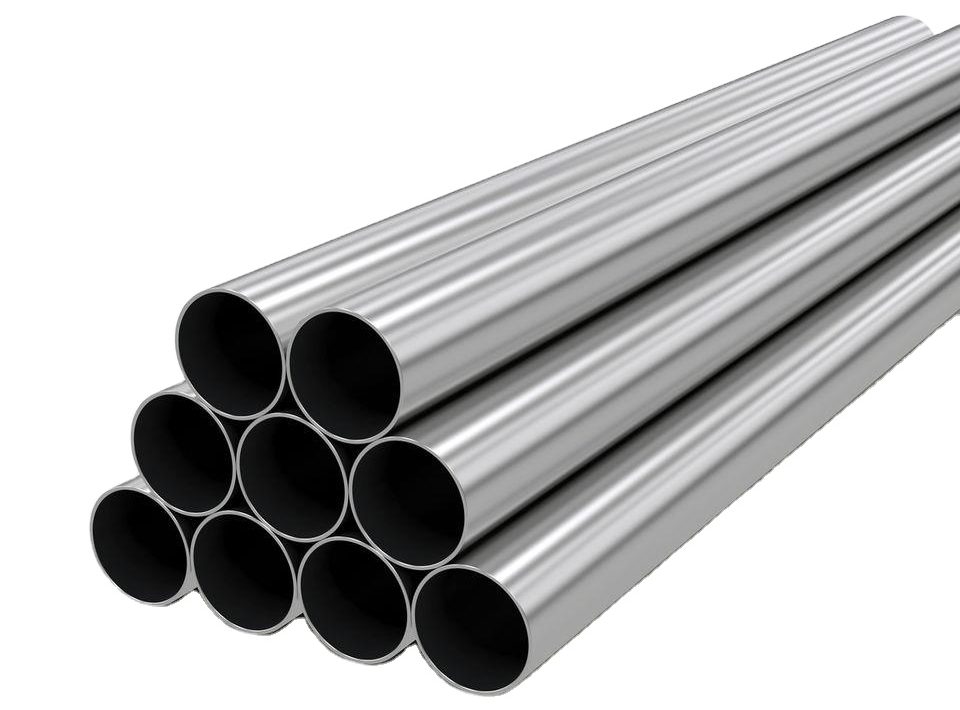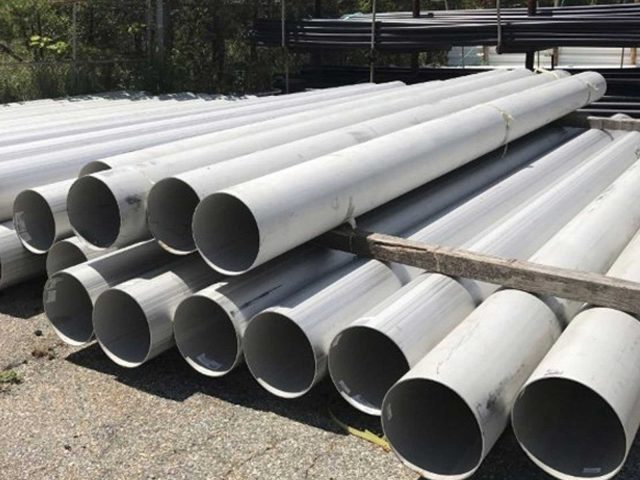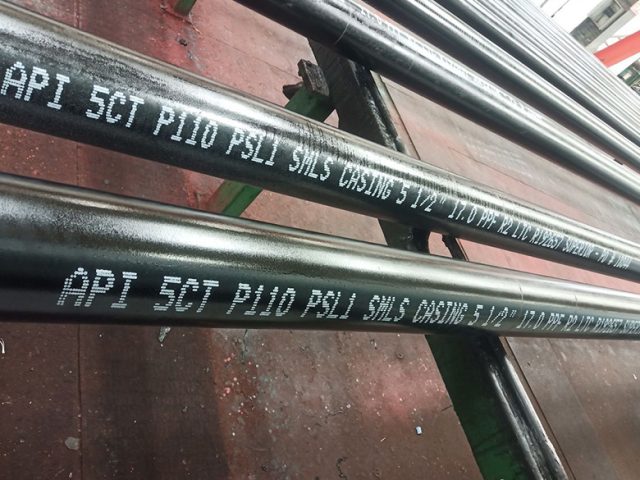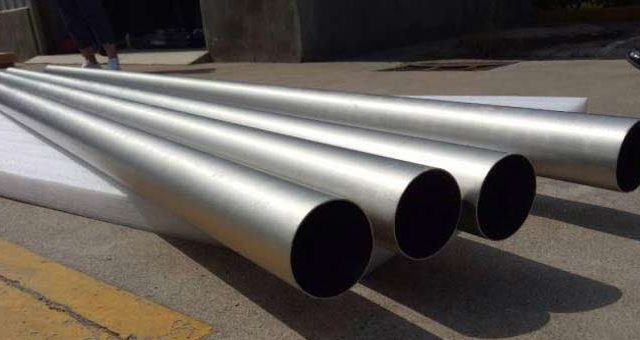201 SS Pipe | 201 Stainless Steel Pipes

201 Stainless Steel Pipe: A Comprehensive Guide
Introduction
201 stainless steel pipe is a type of pipe made from stainless steel alloy 201, which belongs to the austenitic family of stainless steels. This alloy is known for its economical properties and corrosion resistance, making it a popular choice for various applications. In this comprehensive guide, we will explore the characteristics, production methods, applications, and benefits of 201 stainless steel pipe.
Table of Contents
- Characteristics of 201 Stainless Steel
- Production Methods
- Applications
- Benefits of 201 Stainless Steel Pipe
- Limitations and Considerations
- Conclusion
1. Characteristics of 201 Stainless Steel
201 stainless steel is an austenitic chromium-nickel-manganese (Cr-Ni-Mn) stainless steel alloy with a lower nickel content compared to other common austenitic stainless steels, such as 304 stainless steel. The composition of 201 stainless steel typically includes:
- 16-18% Chromium
- 3.5-5.5% Nickel
- 5.5-7.5% Manganese
- 2% or less Silicon
- 0.15% or less Carbon
- 0.060% or less Sulfur
- 0.030% or less Phosphorus
Some of the key characteristics of 201 stainless steel pipe include:
- Corrosion Resistance: Due to its chromium content, 201 stainless steel pipe exhibits good corrosion resistance, making it suitable for various environments where exposure to moisture, chemicals, or acidic conditions is expected.
- Formability: 201 stainless steel has excellent formability, making it easy to manufacture into various shapes, such as round, square, or rectangular pipes.
- Weldability: The alloy can be readily welded using conventional welding techniques, such as TIG, MIG, and resistance welding.
- Magnetic Properties: Unlike other austenitic stainless steels, 201 stainless steel is slightly magnetic when cold worked or welded. This property is due to the lower nickel content in the alloy.
Type 201 Stainless Steel is covered by the following specifications: ASTM A240, ASTM A666.
Chemical Composition:
| Element | Type 201 |
| Carbon | 0.15x |
| Manganese | 5.5 – 7.5 |
| Sulfur | 0.03X |
| Phosphorus | 0.060x |
| Silicon | 1.0 x |
| Chromium | 16 – 18 |
| Nickel | 3.5 -5.5 |
| Nitrogen | 0.25x |
Mechanical Properties:
| Type | Yield Strength 0.2% offset (KSI) | Tensile Strength (KSI) | % Elongation (2″ Gauge length) |
Hardness Rockwell |
| 201 Ann | 38 min. | 75 min. | 40% min. | HRB 95 max. |
| 201 ¼ Hard | 75 min. | 125 min. | 25.0 min. | 25 – 32 HRC (typical) |
| 201 ½ Hard | 110 min. | 150 min. | 18.0 min. | 32 – 37 HRC (typical) |
| 201 ¾ Hard | 135 min. | 175 min. | 12.0 min. | 37 – 41 HRC (typical) |
| 201 Full Hard | 145 min. | 185 min. | 9.0 min. | 41 – 46 HRC (typical) |
2. Production Methods
There are several methods used to produce 201 stainless steel pipes, including:
- Seamless Pipe Production: Seamless pipes are made by extruding a solid billet of stainless steel alloy through a die, creating a hollow tube without any seams or welds. This method produces pipes with a smooth finish, excellent dimensional accuracy, and superior mechanical properties.
- Welded Pipe Production: Welded pipes are made by forming a flat sheet of stainless steel alloy into a cylindrical shape and then joining the edges together using a welding process. Welded pipes are typically less expensive than seamless pipes, but they may have a visible weld seam and slightly lower mechanical properties.
- Cold Drawing: Cold drawing is a process where a stainless steel pipe is drawn through a series of dies to reduce its diameter and wall thickness. This method increases the pipe’s strength and improves its surface finish.
3. Applications
201 stainless steel pipe has a wide range of applications in various industries, including:
Construction and decoration: 201 stainless steel pipe is widely used in construction and decoration industries due to its excellent corrosion resistance, formability, and weldability. It can be used for making handrails, railings, window frames, door frames, and other decorative elements.
Automotive industry: 201 stainless steel pipe is also used in the automotive industry for manufacturing various parts, such as exhaust systems, fuel lines, and structural components. Its high strength, corrosion resistance, and formability make it a suitable material for these applications.
Food and beverage industry: 201 stainless steel pipe is used in the food and beverage industry for making various equipment and machinery, such as storage tanks, pipelines, and processing equipment. Its corrosion resistance and hygiene properties make it a suitable material for these applications.
Chemical and petrochemical industry: 201 stainless steel pipe is used in the chemical and petrochemical industry for manufacturing various equipment and machinery, such as reactors, heat exchangers, and storage tanks. Its corrosion resistance and high strength make it a suitable material for these applications.
4. Benefits of 201 Stainless Steel Pipe
Some of the key benefits of 201 stainless steel pipe include:
- Cost-Effectiveness: 201 stainless steel is a more economical alternative to other austenitic stainless steels due to its lower nickel content.
- Corrosion Resistance: The pipe provides good corrosion resistance in various environments, making it suitable for a wide range of applications.
- Lightweight: 201 stainless steel has a lower density compared to other stainless steels, making it a lightweight option for various applications, such as automotive and aerospace components.
- Ease of Fabrication: The excellent formability and weldability of 201 stainless steel make it easy to manufacture and process into various shapes and sizes.
5. Limitations and Considerations
Despite its many benefits, there are some limitations and considerations when using 201 stainless steel pipe:
- Intergranular Corrosion: 201 stainless steel is susceptible to intergranular corrosion in environments with high temperatures and high concentrations of corrosive elements. Proper heat treatment and material selection are essential to minimize this risk.
- Magnetic Properties: Due to its lower nickel content, 201 stainless steel is slightly magnetic when cold worked orwelded. This property may not be suitable for certain applications where non-magnetic materials are required.
- Lower Corrosion Resistance: While 201 stainless steel pipe offers good corrosion resistance, it is not as corrosion-resistant as other higher nickel-containing austenitic stainless steels, such as 304 or 316. In highly corrosive environments, it may be necessary to choose a different material.
- Chloride Stress Corrosion Cracking: 201 stainless steel is more susceptible to chloride stress corrosion cracking compared to other austenitic stainless steels. It is essential to consider the environment and service conditions before selecting this material for specific applications.
6. Conclusion
201 stainless steel pipe is a versatile and economical option for a wide range of applications. With its good corrosion resistance, formability, weldability, and cost-effectiveness, it has become a popular choice for various industries, such as construction, automotive, food and beverage, chemical, and furniture manufacturing.
However, it is essential to consider the limitations and specific requirements of each application before selecting 201 stainless steel pipe. In some cases, a different material may be more suitable due to higher corrosion resistance or non-magnetic properties.
In conclusion, 201 stainless steel pipe offers a balance of performance and cost, making it an attractive option for many applications. Understanding the material’s properties, production methods, benefits, and limitations will enable informed decision-making when selecting the appropriate material for a specific project.




